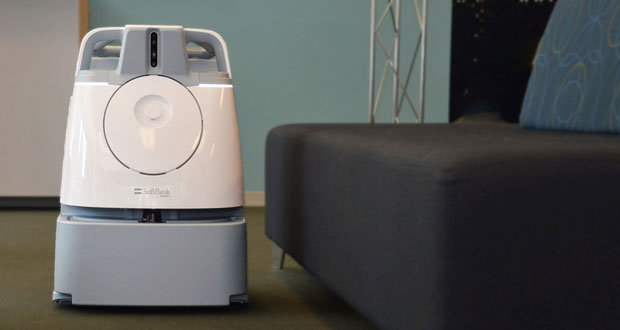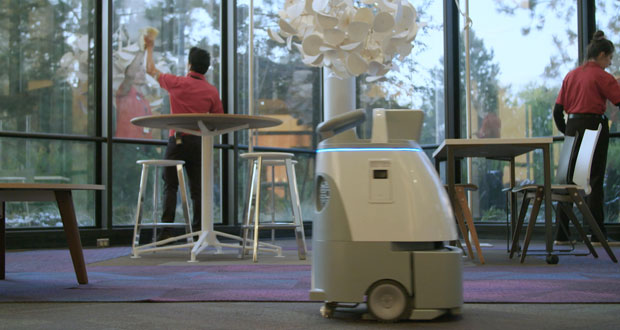By Nils J.van der Zijl, VP Sales & Marketing, Softbank Robotics EMEA
Success of new technology requires the buy-in from the very people who will be working with them. Sure, you’ve heard it before – “What’s in it for me,” “It won’t work,” or maybe “Robots are taking our jobs”.
It’s not enough to simply present a new system or hand out technology and expect staff to be enthusiastic about the prospect of working with it. As supervisor, you need to take the lead in helping them to see the real value it provides them and their work.
Approach it with the mindset that this is about introducing new processes to improve conditions and outcomes, it’s not just about ensuring new technology is used.
A change in management
The past year has forced us all to look at our work practices differently. Today, the world of cleaning is under much greater pressure to perform.
With ever more competition in the market, commercial cleaning contractors are having to offer clients more for less in order to win and retain contracts – that means cleaning a greater area of building, to an even higher standard, but often at a reduced cost.
Cleaning supervisors are caught between meeting performance KPIs and introducing new standards, while encouraging teams to do more during challenging circumstances. The status quo is ineffective; therefore, change is required.
So, it’s no wonder that cleaning managers and supervisors are looking for new solutions to tackle the big challenges of people management and service delivery.
However, COVID-19 has not only highlighted the need for change management throughout businesses and the way they operate, it has also shown the pitfalls of badly handled change management programmes.
Bringing change with cobots
A growing number of FM and cleaning contractors are turning to cobotics as a way to drive performance and productivity, whilst managing costs and streamlining operations to tackle the challenges of COVID-19.
Cobotics is the collaboration between frontline workers and machines or robots. Cobots are collaborative robots which carry out repetitive or strenuous tasks which would otherwise be performed by your cleaners, but they work alongside them, not in their place.
An example is Whiz, our cobotic vacuum sweeper which cleans large areas of floor space in a more efficient and consistent way to manual cleaners. Whiz is a simple to use and reliable self-driving vacuum cleaner designed for soft-surfaces, taking over the ‘grunt work’ of vacuuming large areas of flooring and freeing up your workers to focus on other, more valuable tasks.

Addressing challenges with your cleaning team
Cleaning often involves long and unsociable hours, physically strenuous activities and, increasingly, a need to juggle a large workload in a limited amount of time performing to ever-higher standards to meet required levels of servicing.
The pressure on cleaning teams has become greater over recent years. While innovative new technology is set to give cleaners the support that they need and deserve, the biggest challenges faced by supervisors in pushing out new technology across their teams are:
- Cleaners are worried that robots will take their jobs
- They don’t see any benefits for themselves
- They’re not convinced that the tech will actually work
Your team and technology in change management
Cleaners have their preferred ways of doing things and can often be resistant to change. Some will have been cleaning in a certain way for decades so why would they change now?!
Consider new technology through the eyes of a cleaner:
- How will these changes improve their jobs – what will they gain? Drill down to what matters to employees and include this in an effective campaign.
- Instead of criticising staff for sticking with the status quo, showcase adoption of changes in the senior level teams. Building trust, that we’re all in it together.
- Keep communications clear. It’s important to speak to teams and not simply email instructions, this can fall on deaf ears. Orders should be simple to follow.
- Consider how to incentivise the team and celebrate achievements with key milestones
- Teamwork is key. Work in collaboration with your employees before introducing the new technology. This allows them a sense of ownership.
Whiz through a cleaner’s eye
Cobots can make a huge difference to cleaners but it’s vital to introduce them in the right way, to get your team members feeling comfortable and enthusiastic for this change:
- Cobots are collaborative and they are there to support people. Cobots need to be instructed, managed and monitored by cleaners, otherwise they don’t work – plus they can’t do everything. Cleaning is, and will continue to be, a people-driven discipline; cobots are simply there to make their lives easier.
- Increasing workloads due to client demands and new standards means cleaners have been working in tough conditions, often in depleted teams. With Whiz in their team, some of that pressure is lifted. Cleaners can do more varied and enjoyable work – they even get to learn new skills and work alongside cutting-edge AI technology!
- Cobots like Whiz cover more ground, negates the need for spot cleaning and leads to cleaner, more hygienic floors. And it’s extremely easy to use.
If you can create a positive ‘cobotic culture’, where your teams understand the role of cobots, see how it can help them in their daily work, and are eager to embrace this change – then you’ll be able to get the maximum benefits from a cobot like Whiz!





